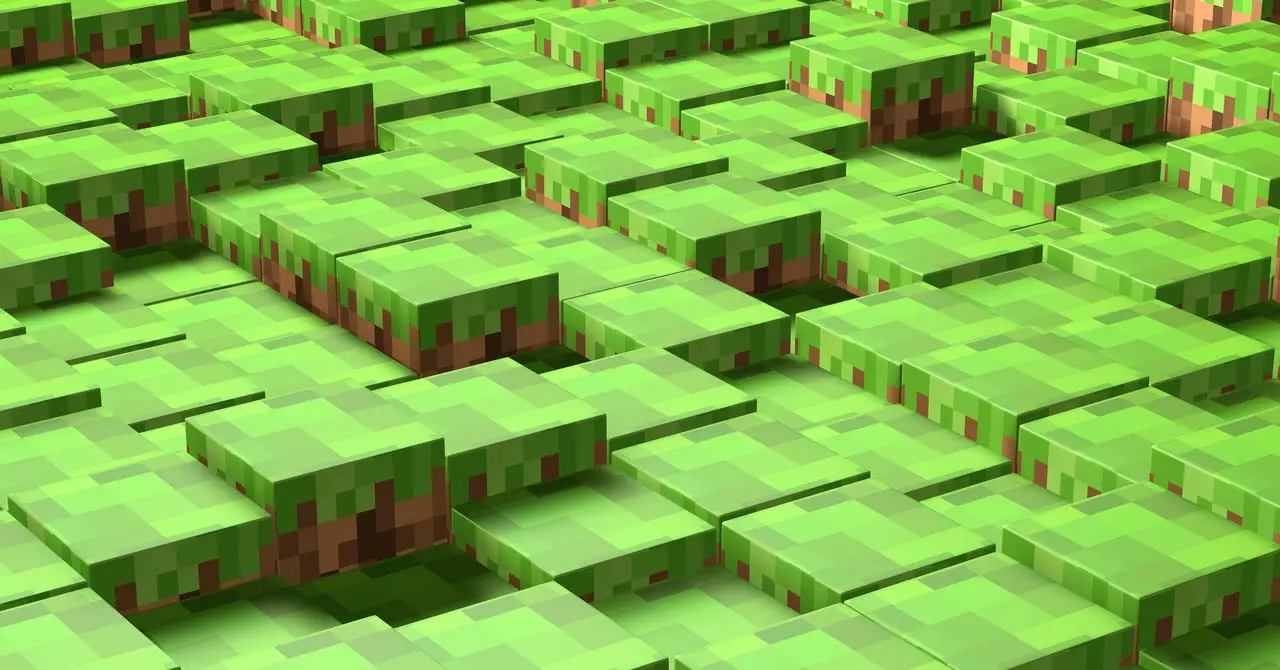The realm of video gaming continues to evolve rapidly, and one phenomenon exemplifying this evolution is the AI-generated game Oasis, which surfaced recently as an avant-garde homage to the beloved Minecraft. Reveling in creative chaos and a distinctive artistic approach, Oasis captures the spirit of its predecessor whilst diverging significantly in gameplay methodology. This article delves into the intriguing features of Oasis, the technology that powers it, and the challenges it presents for the future of gaming.
At first glance, Oasis may strike seasoned gamers as a mere imitation of Minecraft, echoing its building mechanics and open-ended play style. However, what sets Oasis apart is its innovative use of transformer-based AI algorithms that generate the gaming environment in real-time, blurred lines between programmer-defined parameters and machine-created experiences. Developed by Decart, an Israeli AI startup, in collaboration with Etched—a custom silicon design company—Oasis illustrates the potential embedded in advanced hardware tailored to foster transformative AI applications.
Unlike traditional games that rely on structured, hand-coded rules, Oasis skews towards a stranger artistic realm, wherein each frame is a spontaneous creation from an AI model trained on an extensive dataset of Minecraft gameplay. It captures the whimsical essence of block-building while embedding a peculiar twist: the gameworld shifts dynamically, offering an experience that feels anchored in dreams rather than reality.
One of the most mesmerizing aspects of Oasis is its unwavering ability to present a world that teeters on the edge of stability. As players interact with the environment—turning the camera, clicking, or moving the mouse—they may notice that the landscape undergoes gradual metamorphoses, often yielding bizarre results, such as distorted creatures or nonsensical architectural designs. The experience verges on the surreal, akin to a waking dream where the scenery constantly evolves in unexpected fashions.
This fluidity presents both creative possibilities and cognitive challenges for players. For instance, uploading a personal image can instantaneously lend a fresh perspective to the game; a photograph can be transformed into a vibrant landscape, albeit not without its limitations, as users quickly discover the constraints of the AI’s interpretations. Such interactivity fosters a sense of agency in players, permitting them to influence the AI’s output in unpredictable ways.
Despite its captivating façade, Oasis also shines a spotlight on the inherent challenges that AI-generated gaming faces. Joy in gaming often stems from structure and consistency, elements that Oasis notoriously lacks. According to Julian Togelius, a computer science professor at New York University, generative AI may hold promise for character control and environment generation but presently exists in a preliminary stage. The technology is hailed for its potential but isn’t yet refined enough to consistently offer the experience gamers expect.
Further complicating this evaluation is the notion of the uncanny valley suggested by game designer Frank Lantz, who posits that, while intriguing, the game teeters dangerously close to being unplayable. While the concept is innovative and exudes a certain charm, the underlying inconsistency can lead to frustration rather than enjoyment. Lantz hints at untapped potential, advocating for ingenuity within the game design community to harness the essential qualities of Oasis and transform it into a favored experience for many.
As Oasis climbs the cultural zeitgeist, its viral spread can be traced back to the exploration of its AI-driven quirks, such as the ability to teleport players to uniquely dreamt environments reminiscent of Minecraft’s mystical realms. Yet, this chase for unexpected realms reveals a fundamental truth in gaming; players crave environments they can understand and navigate with relative ease.
Looking forward, the future of Oasis presents an opportunity for integration between the structured gameplay of traditional games and the spontaneous allure of generative AI. By refining the technology and broaching the gaps identified by figures like Togelius and Lantz, developers could shape a landscape where structured game rules are harmonized with AI creativity. The challenge lies not just in the algorithm’s capabilities but in discernibly crafting an engaging experience that resonates with gamers long after the initial novelty of surreal wandering wears off. Oasis might not yet stand tall among gaming giants, but it fundamentally pushes the boundaries of what virtual environments can represent.

